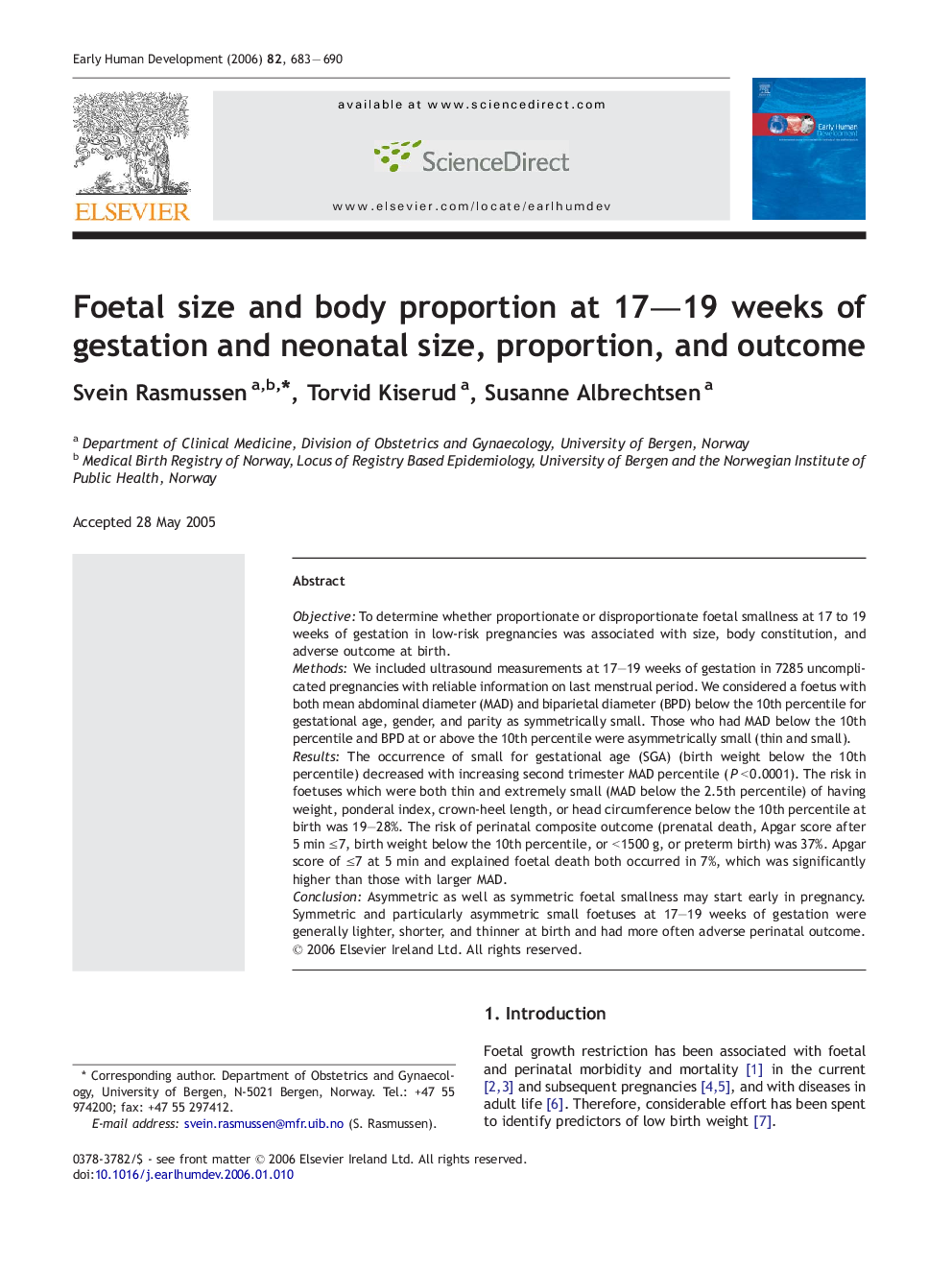| Article ID | Journal | Published Year | Pages | File Type |
|---|---|---|---|---|
| 3918360 | Early Human Development | 2006 | 8 Pages |
ObjectiveTo determine whether proportionate or disproportionate foetal smallness at 17 to 19 weeks of gestation in low-risk pregnancies was associated with size, body constitution, and adverse outcome at birth.MethodsWe included ultrasound measurements at 17–19 weeks of gestation in 7285 uncomplicated pregnancies with reliable information on last menstrual period. We considered a foetus with both mean abdominal diameter (MAD) and biparietal diameter (BPD) below the 10th percentile for gestational age, gender, and parity as symmetrically small. Those who had MAD below the 10th percentile and BPD at or above the 10th percentile were asymmetrically small (thin and small).ResultsThe occurrence of small for gestational age (SGA) (birth weight below the 10th percentile) decreased with increasing second trimester MAD percentile (P < 0.0001). The risk in foetuses which were both thin and extremely small (MAD below the 2.5th percentile) of having weight, ponderal index, crown-heel length, or head circumference below the 10th percentile at birth was 19–28%. The risk of perinatal composite outcome (prenatal death, Apgar score after 5 min ≤ 7, birth weight below the 10th percentile, or < 1500 g, or preterm birth) was 37%. Apgar score of ≤ 7 at 5 min and explained foetal death both occurred in 7%, which was significantly higher than those with larger MAD.ConclusionAsymmetric as well as symmetric foetal smallness may start early in pregnancy. Symmetric and particularly asymmetric small foetuses at 17–19 weeks of gestation were generally lighter, shorter, and thinner at birth and had more often adverse perinatal outcome.
